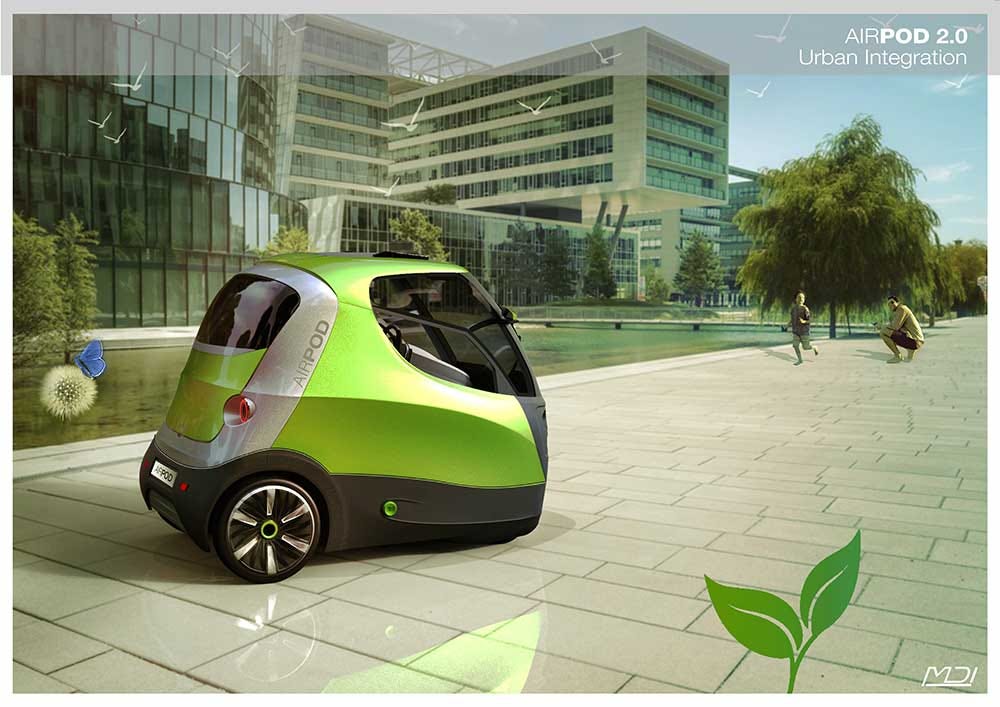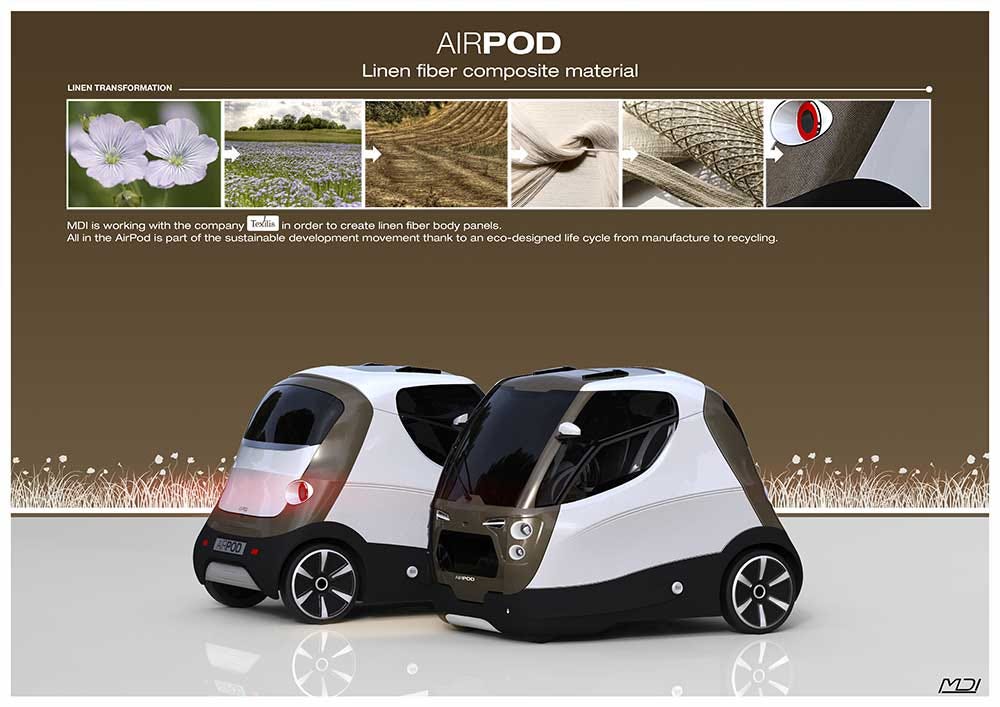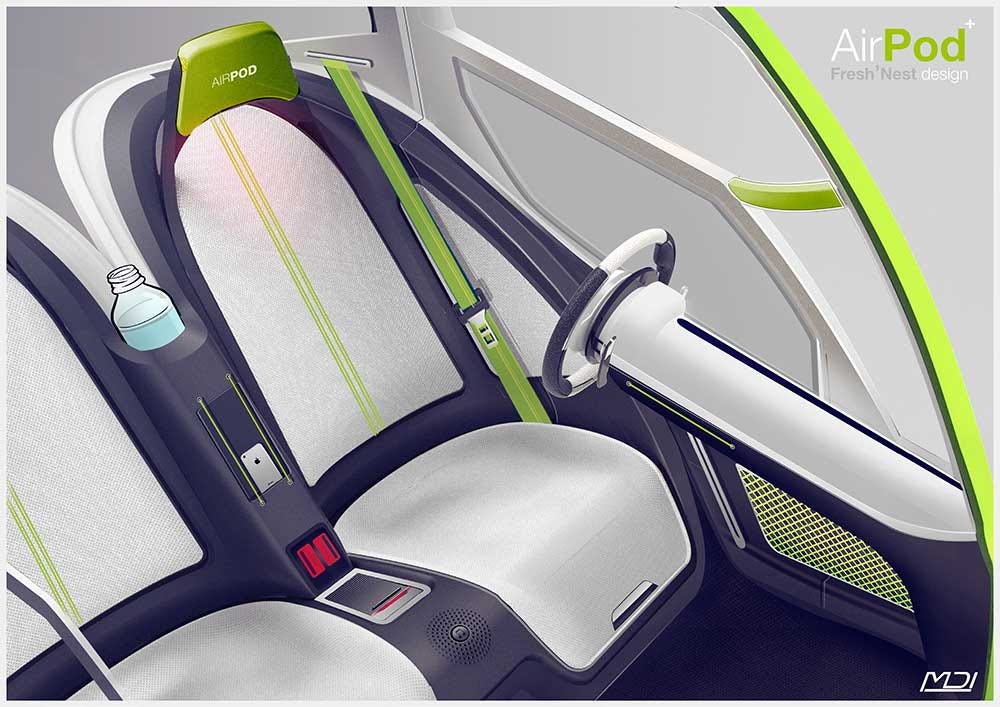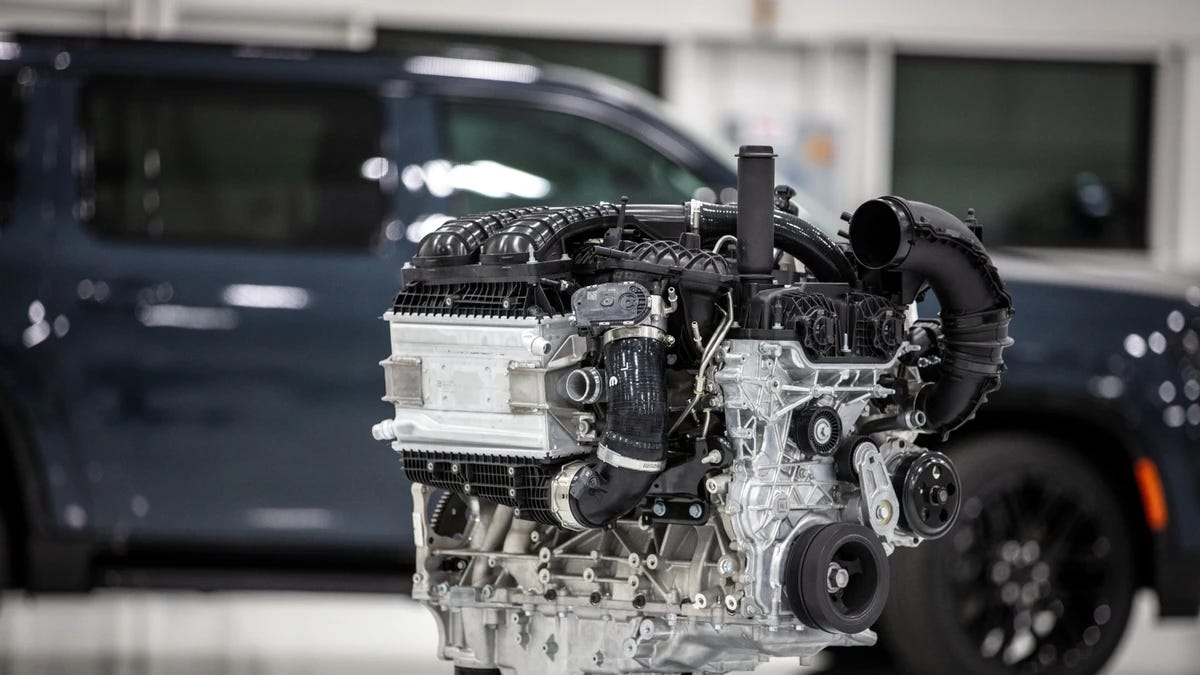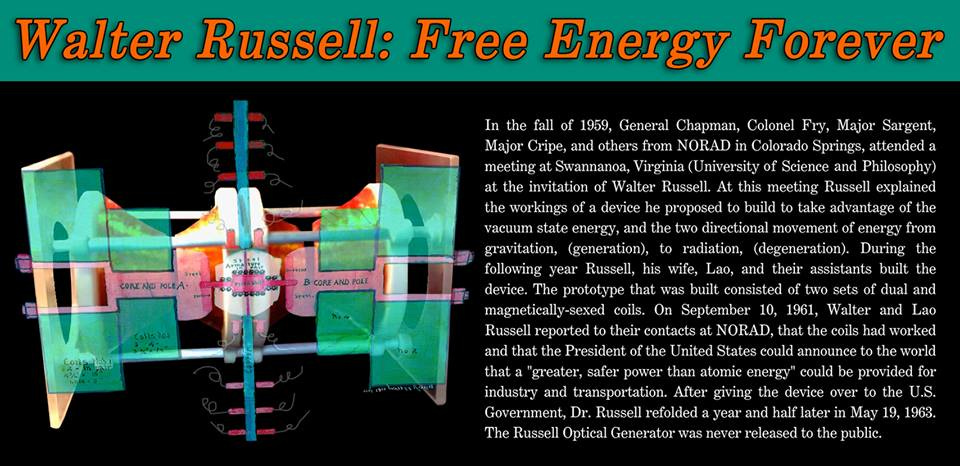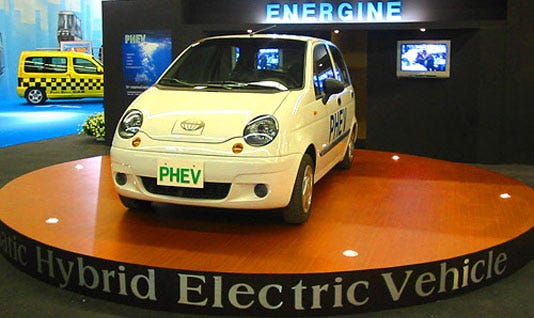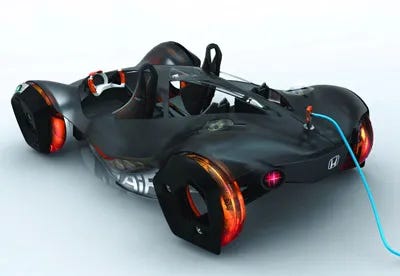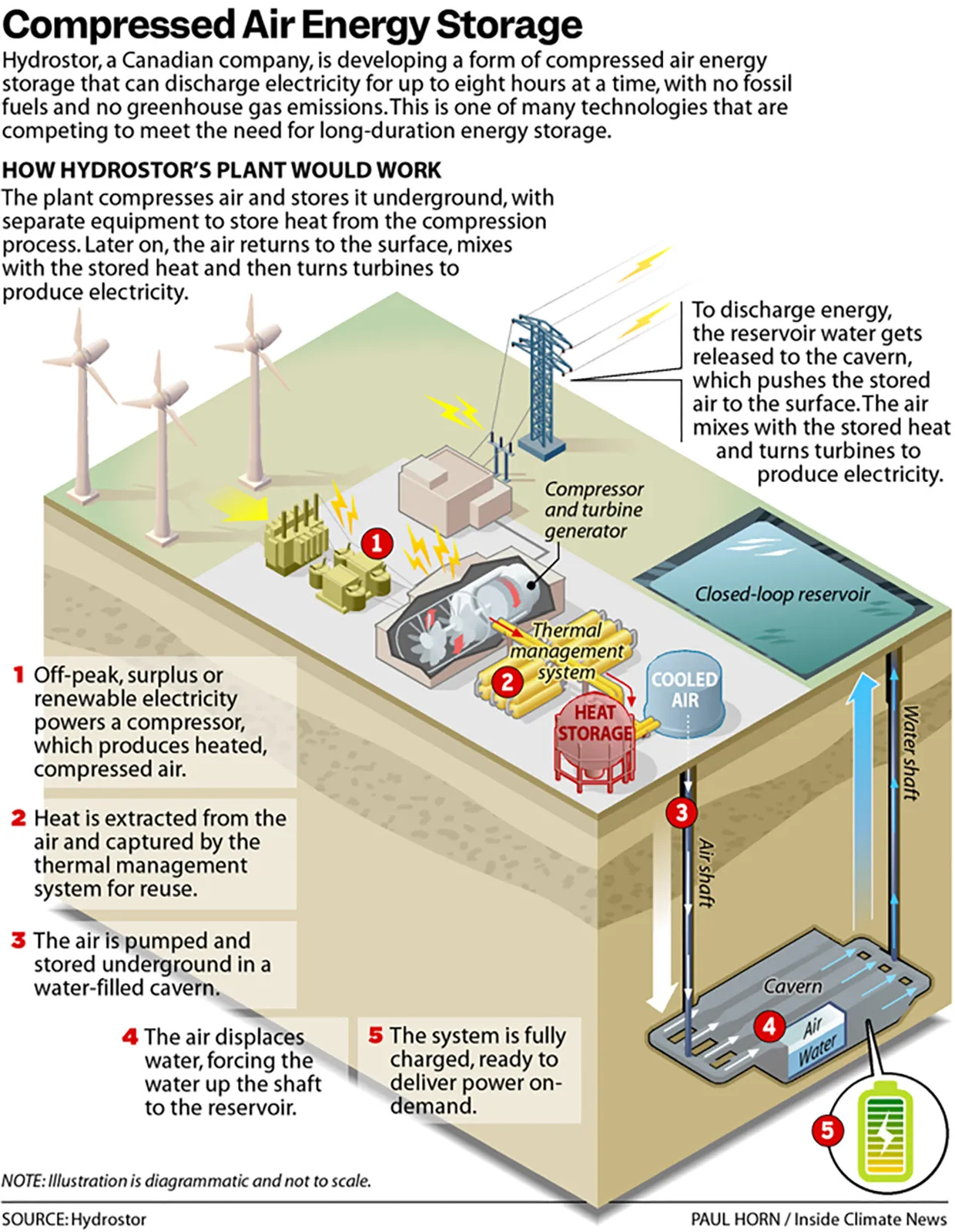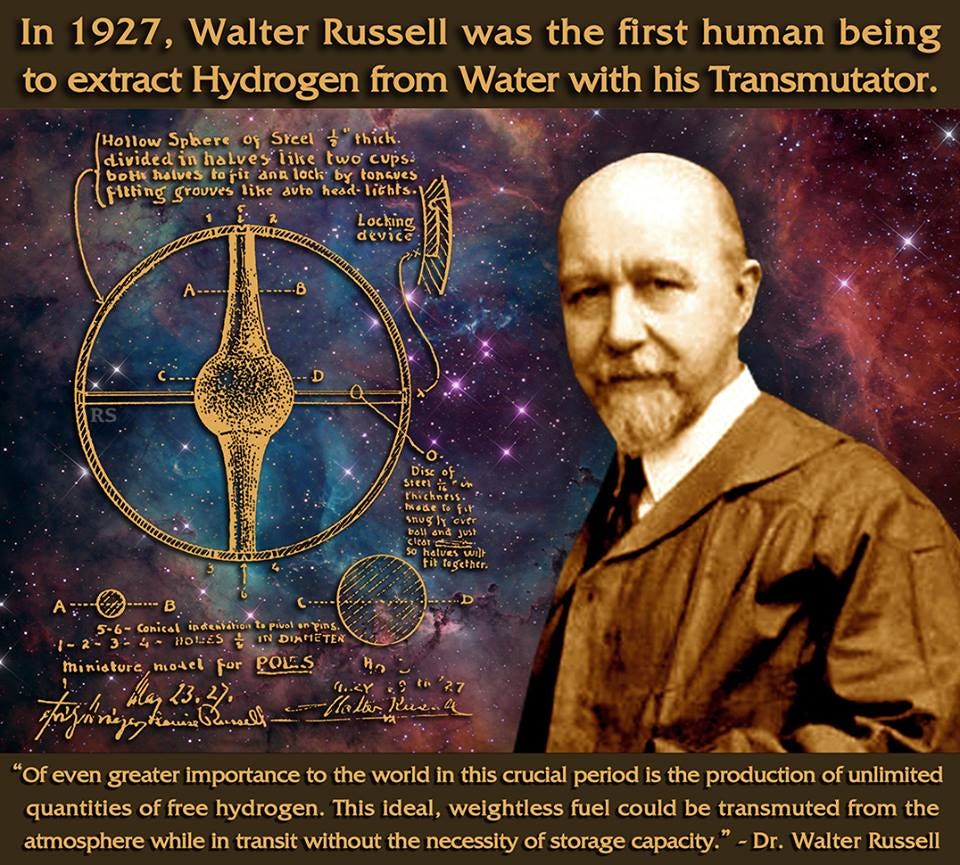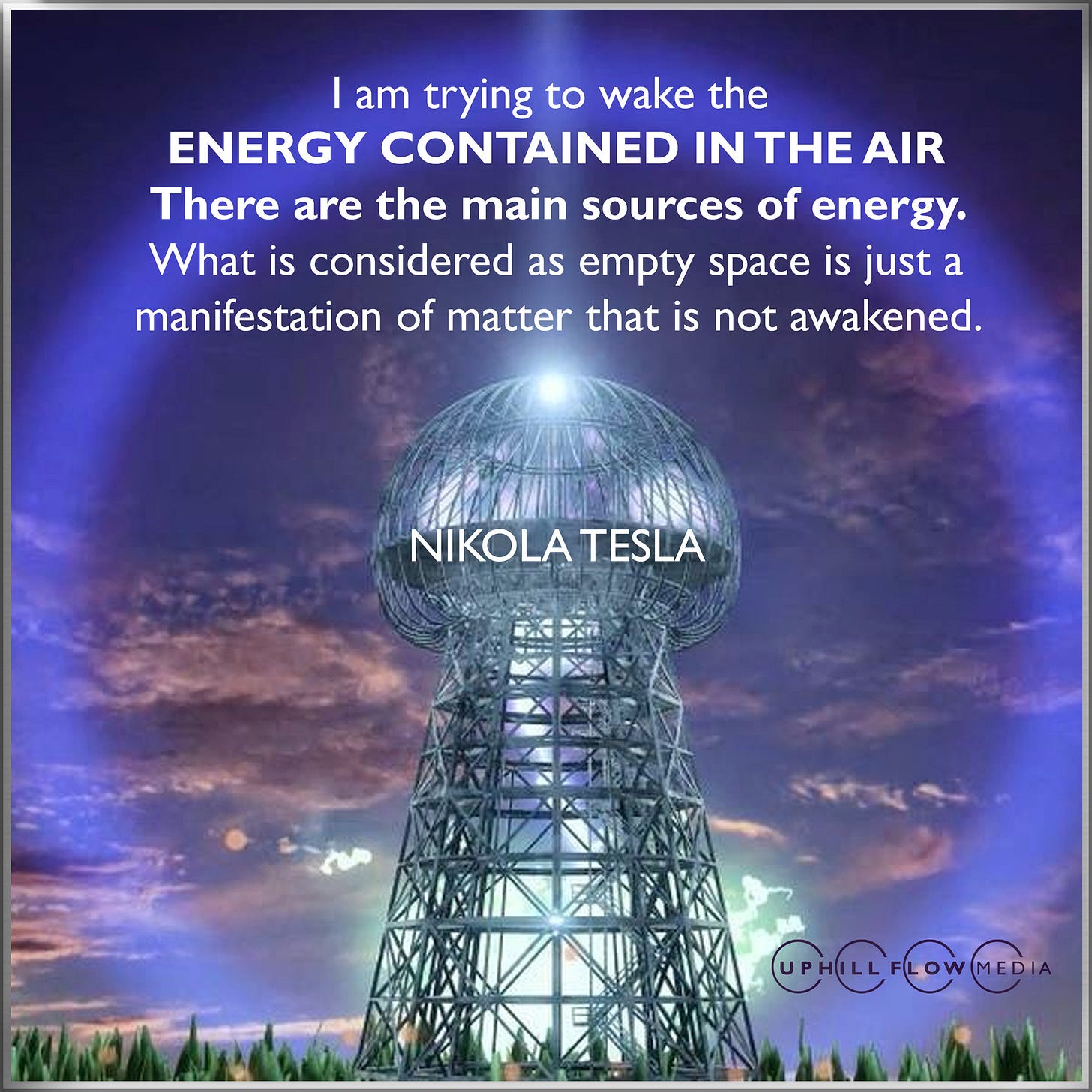Cars that Run on Air & the Ongoing Compressed-Air-Engine Revolution
There are now many car companies & inventors building a wide variety of compressed-air engines; some that run only on air, while others are supplemented by petrol or non-lithium batteries.
“Whatever our resources of primary energy may be in the future we must, to be rational, obtain it without consumption of any material. Long ago I came to this conclusion.”
— Nikola Tesla
While ‘Electric Vehicles (EVs)’ dominate the news headlines, this quiet but burgeoning compressed-air revolution happening now in the automotive design industry is only getting louder by the day. Major breakthroughs are happening as many of these car builders realize the dangerous, costly, inefficient toxicity of lithium-battery-powered cars—which is really what they should called.
In fact, there are now several different models of cars, bikes, motorcycles, trains, and most recently—batteries as well as other new innovations, that all run on compressed-air and we’ll be featuring some of them in this article.
The principles of harnessing compressed air for energy are simple and based on the natural transmutations involved in thermodynamics:
“The laws of physics dictate that uncontained gases will fill any given space. The easiest way to see this in action is to inflate a balloon. The elastic skin of the balloon holds the air tightly inside, but the moment you use a pin to create a hole in the balloon’s surface, the air expands outward with so much energy that the balloon explodes. Compressing a gas into a small space is a way to store energy. When the gas expands again, that energy is released to do work. This principle is the basis behind what makes an air car run.” —Zero Pollution Motors
Toyota Created the One of the First Air Motors 10 Years Ago
The creation of Toyota’s air-powered Ku was groundbreaking…
“The Ku was no ordinary vehicle. The car was a three-wheeled compressed air-powered eco-car designed by Toyota Industries Corporation. This car was designed by a team of engineers named “Yume no Kuruma Kobo,” which translates to “Dream Car Factory,” they worked on this car as a hobby.
The Ku set a record on September 9, 2011, when they recorded a speed of 129.2 km/h, or approximately 80 mph, at a test course in Japan. The car’s unique engine relies on compressed air stored in a tank, and the motor is similar to a steam engine. It expanded the air, forcing the vehicle’s pistons to move and propel it.
The Ku was an excellent example of how aerodynamically efficient the car could be while being environmentally sound. However, the idea was never developed further than a model, and before long, the world had lost sight of this revolutionary air-powered car.”
The AirPod by MDI
Then in 2012, these small golf-cart sized AirPods were poised for what seemed like a major launch in production—but due to the fact that they were considered a ‘disruptive technology’, their growth was stunted and the mass production of environmentally harmful lithium-battery-powered-cars deceptively touted as ‘green EVs’ begin.
Due to the operating costs and ease of use of the vehicle, the compressed air car is a disruptive technology that addresses one of the issues of electric cars, which is the charging time. In the case of compressed air, the car can be refilled like a gasoline car by transferring compressed air from a compressed air station, similar to the one that exists today at the gas station for the fill up the tires but with larger capacity and pressure in order to refill the vehicles.
The Tata AirPod: India's tiny air-powered prototype car
Instead of running on gas or electricity, the engine is powered by a tank of compressed air, which can either be pumped in through a charging station or taken in while driving with the help of an electric engine. The car can also recapture some energy during braking, similar to current hybrid vehicles. The concept still seems a bit shaky, but it could offer cheaper and more environmentally friendly recharging without waiting for something like IBM's lithium-air battery.
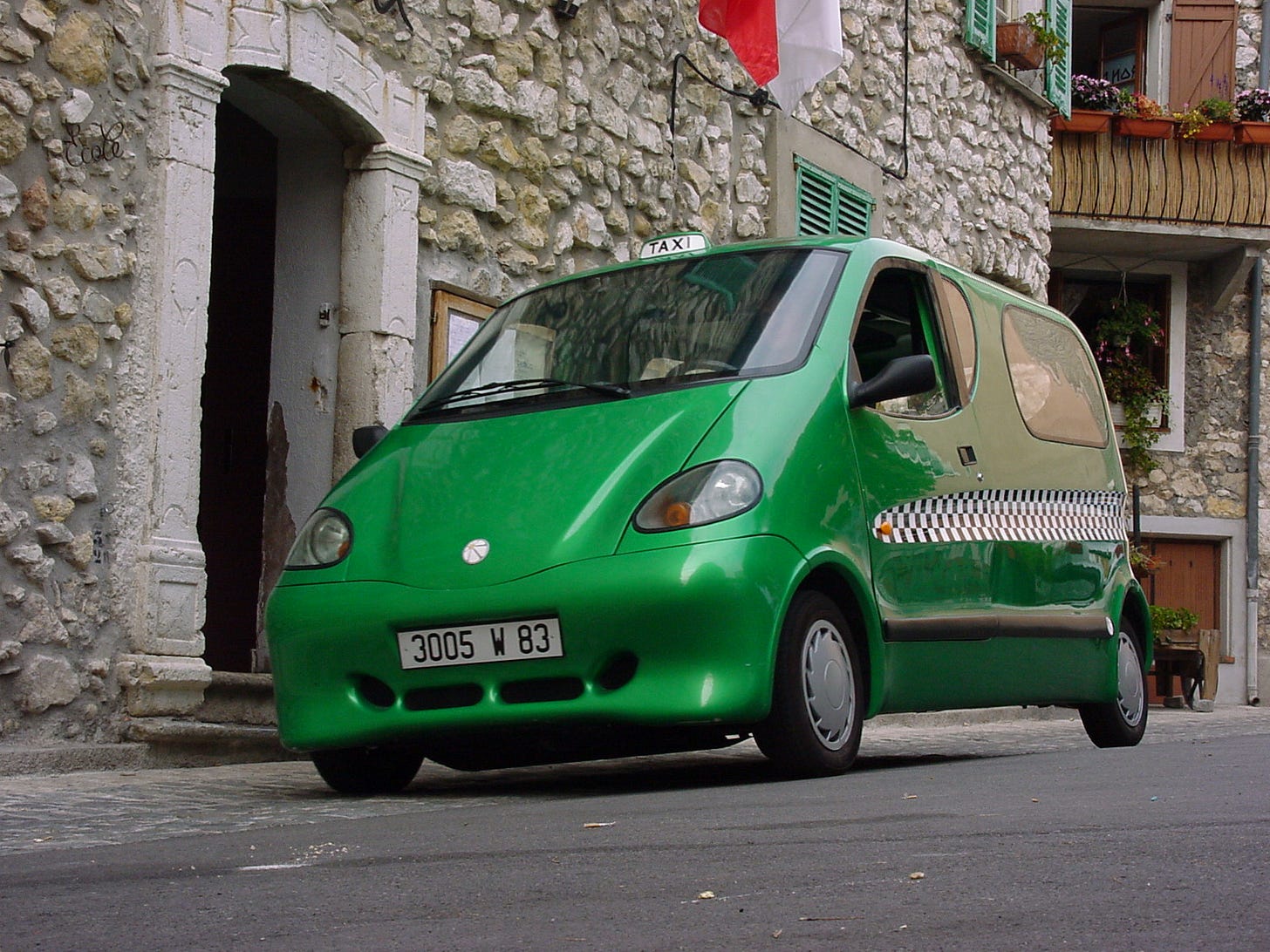
The AirPod was designed by Motor Development International (MDI) and their designs have now been successfully integrated into cars by Tata Motors:
MDI Inventor Develops Compressed Air Car:
Inventor Guy Negre of Motor Development International (MDI, France) presented a new environmentally friendly vehicle powered by compressed air intended for town use. The CityCAT air car will cost 6,800 euros ($6,700) and features one row of seats wide enough for three and a curved, pod-like front end. The CityCAT, with a top speed of around 110km an hour, runs for a maximum of around 10 hours at low speed before it needs refueling.
Inside the car, cold air compressed in tanks to 300 times atmospheric pressure is heated and fed into the cylinders of a piston engine. No combustion takes place, so there is no pollution. The air from the exhaust pipe is cleaner than the air that goes in due to an internal filter. The car can be refilled with air at home using an electric compressor and drivers may be able to recharge the cars in filling stations in three minutes for as little as three dollars.
Using the same compressed-air technology of the AirPod, Tata Motors also created a tourist train that runs purely on air. This is a very simplified trolley version of the old-school fireless locomotive trains that were also powered by compressed air:
Technology of Fireless Steam Locomotives:
The first fireless locomotive was built as early as 1882. Even then, the great advantages of fireless locomotives were recognized. Because they do not need a fireman, one-man operation has always been an important contribution to good economy. But also the simple, robust construction caused a lot of joy among the operators, as the fireless locomotives hardly caused any maintenance costs. Only the plain bearings of axles and rods, which were common in the past, required occasional workshop work. With today's roller bearings, modern fireless locomotives would be virtually maintenance-free.
By 1986, some 3,500 fireless locomotives had been built in Germany alone, some of which are in service today. With the replacement of the old steam locomotives, the ingeniously simple storage technology was unfortunately forgotten as well. But thanks to modern technology, it now once again offers an economical, environmentally friendly alternative for regional and works transport.
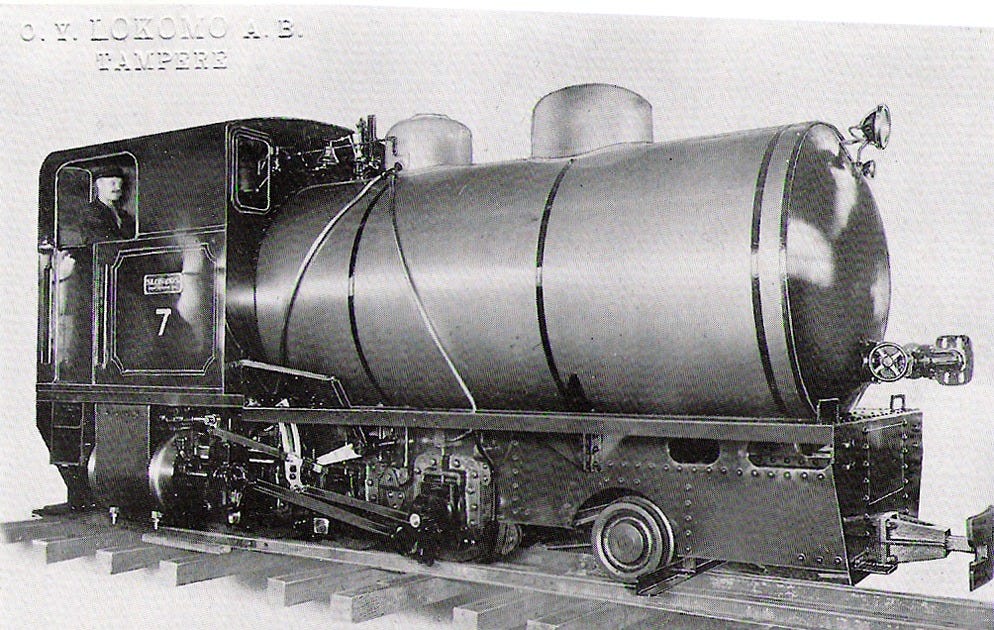
Stellantis-Jeep Debuts Hurricane Twin-Turbo I-6 Engine That Increases Fuel Economy & Power
In addition to the uniquely designed compressed-air engine, this car also uses regular gas and has a fuel efficiency of 120 miles per gallon making it much more powerful and versatile than the AirPod. However, this is not to say that compressed-air is an inferior source of energy. As these compressed-air engine designs evolve into the future, I am sure we will see far greater capacities.
We still have much to discover in the fascinating world of chemistry and geometry. As we learn more and advance our understandings, we may figure out that the elemental structures and shapes involved in the design of the air containment tank may be adjusted to create the vital change needed for a significant increase in power and performance:
ELEMENTS ARE BUT DIFFERENT CONDITIONS OF LIGHT PRESSURES
"The trouble with humans is in forming wrong conclusions in relation to Nature’s expressions. We think, for example, that elements are different substances and that each substance is permanently existent as such. That is not true. Elements are but different conditions of light pressures. They are the raw materials for the fashioning of Creation’s images in the patterns controlled by light waves. They appear when the pressure necessary for their conditions appear and disappear when those pressure conditions cease. Every element in each octave occupies its own pressure position in its wave. Each element seems to be a different substance as the electric pressure conditions of each position in each wave of matter changes. However, it is not the substance that changes, it is the condition of the substance.”—Walter Russell
The following specs for the Hurricane engine, along with additional information, are available on Stellantis Media:
New 3.0-liter Hurricane twin-turbo, inline, six-cylinder engine puts out less tailpipe emissions and uses less gasoline than larger engines, yet delivers V-8 levels of power
Robust architecture enables Stellantis Propulsion Systems to deliver two distinct variants – one tuned for efficiency, one tuned for performance
Hurricane twin-turbo I-6 designed to account for potential future integration with electrification for low-emission vehicles (LEVs)
Two low-inertia turbochargers power the Hurricane’s rapid response to throttle inputs, along with enhanced torque output for chores such as towing without sacrificing fuel economy
State-of-the-art technologies include Plasma Transfer Wire Arc (PTWA) sprayed cylinder coating, high-pressure gasoline direct injection
First vehicles with Hurricane reach dealership showrooms this year
Cleaner-running Hurricane twin-turbo moves Stellantis toward its commitment of a 50% reduction in carbon emissions by 2030 and to be Carbon Net Zero by 2038, key elements of the Dare Forward 2030 strategic plan (*Note From Editor: Yes, they are cleaner, but this has nothing to do with ‘carbon emissions’—carbon is the gas of life!)
VIDEO: Jeep CEO "Our NEW COMPRESSED AIR Engine Will Destroy The EV Industry"
“Stellantis-Jeep CEO does NOT believe in an all-electric future and now found a way to stop the EV push. He just unleashed a revolutionary COMPRESSED AIR ENGINE that will literally destroy all EV makers. This engine is so ahead of its time that it left the entire auto industry in shock and terror! They have finally managed to find a way to keep combustion cars on the road, without worrying about emissions!”
GM’S New Compressed-Air Engine
GM CEO: "This New Engine Will CHANGE The World!":
“With the rise of electric vehicles (EVs), traditional internal combustion engines (ICEs) are facing increasing scrutiny over their environmental impact. In this context, General Motors (GM) has announced an ambitious foray into compressed air technology—an engine that could redefine transportation and lead us toward a more eco-friendly future…
GM has committed significant resources to improving compressed air engine technology. Their latest prototype boasts performance figures that challenge conventional gasoline engines, albeit with some limitations in torque. In addition, GM's engineers have devised a method to extend vehicle range by transforming the vehicle chassis into a large compressed air reservoir, allowing for better storage and efficiency.”
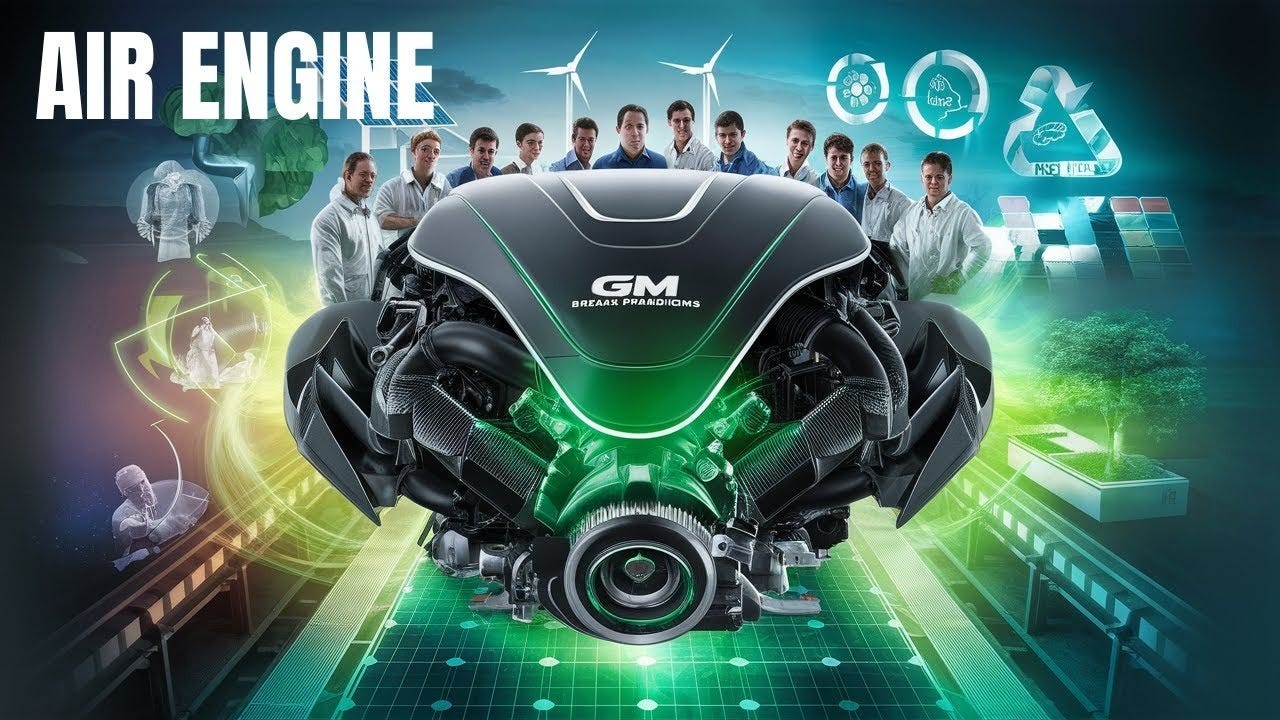
VIDEO: GM’s New Engine Runs on Compressed Air
“Discover the science behind GM's new compressed air engine, from its design and functionality to the environmental benefits it promises. We'll break down how this innovative technology works and why it could be a game-changer for clean energy propulsion and take an in-depth look at the advantages of compressed air engines over traditional combustion and electric engines, including efficiency, sustainability, and cost-effectiveness. We'll also discuss the potential applications and impacts of this technology across various sectors. Learn about the development process, the visionary minds behind the project, and what this means for the future of transportation. We'll also address common questions and misconceptions about compressed air engines, providing you with a comprehensive understanding of this exciting advancement.”
Korea’s Energine PHEV & The Magnetic Air Car
Korean company Energine Corporation has produced a prototype hybrid car that is dually powered by an electric motor and compressed air. The pneumatic-hybrid electric vehicle (PHEV) is designed to run on compressed air until it reaches a cruising speed of about 15 mph—that’s when the electric motor kicks in.
“Korean manufacturer Energine has been showing their PHEV concept model all over the world and since they were granted a patent in the United States, we hope to see them on lots here soon. These cars have a cheerful look with its rounded exterior features covering the advanced compressed air technology. This car has a dual power system—first the air-powered engine is used for acceleration, and then a secondary electrical drivetrain kicks in to keep it cruising. The first models could only maintain a speed of 74 m.p.h. for 30 minutes, but advances in performance are expected. The only exhaust from the car is in the form of cold air, which the manufactures want to use to their advantage in the vehicle’s air conditioning system. Without a fuel tank, spark plugs and cooling systems, the PHEV could cost 20% less than cars using those systems.
Energine is fighting the battle toward a US-based introduction, so there is not an official release date. Their CEO, Cheol-Seung Cho, has said the issue is a “combination of lack of political will in countries where government is not willing to upset the big automotive companies, a lack of financial support, and the absence of the infrastructure to support the technology.”
Magnetic Air Car:
“For the sports car lover who also wants a zero-pollution vehicle, take note of San Jose Club Auto Sport, who claims to be developing the first Magnetic Air Car. Rather than the system of piston-like powered typical in most pneumatic vehicles, the manufacturer plans to use magnetic technology to generate power. The details are unfortunately not public yet, but we know that the car will use a silicon salt battery that has 30% more mass power than a typical lead-acid battery. This 95% recyclable battery charges in under an hour. Unlike gas and electric hybrids that do not perform well in cold temperatures, the Magnetic Air Car promises to operate in a temperature range from -40 degrees Celsius to 50 degrees Celsius.”
Honda Air
The Compressed-Air Sports Car at L.A.’s AutoShow’s Design Challenge
Weighing under 454 kilos (1,000 lbs), the Honda Air is run by a compressed air motor, with the energy held inside compressed air in pressurized tanks. It’s “programmed” to have an autonomy of around 100 miles and has a pneumatic regulator system.
Concepts I never saw in a car like turbo-vacuums and the usage of external air flow to regenerate the tank pressure (probably during braking) contribute to the 100 miles of driving. The car won’t have specialized tanks placed beneath the driver. The chassis will play the role of a tank, fact which reduced the overall weight.
The preoccupation for greenness has led Honda to build the body panels from vegetable-based polymers. Hubless wheels and drive systems, glass reinforced seating panels and tires from urethane and also skeletal sub-frame components also reduce the car’s weight and give significant power savings.
The best part about driving a compressed-air car is that you don’t need special fillers and gas stations; the nearest tire repair shop is good, as is the air compressor Honda provides the car with.
Compressed-Air Batteries & Storage
A Company Is Building a Giant Compressed-Air Battery in the Australian Outback
“Toronto-based Hydrostor is one of the businesses developing long-duration energy storage that has moved beyond lab scale and is now focusing on building big things. The company makes systems that store energy underground in the form of compressed air, which can be released to produce electricity for eight hours or longer.
I spoke with Curtis VanWalleghem, Hydrostor’s CEO and cofounder, to get an update on how close he is to breaking ground on large plants in Australia and California and to learn how he makes the case for his company.
He emphasizes the simplicity of his product.
“It’s a very simple system that just uses a hole in rock [plus] air and water,” he said. “And then the equipment is all from the oil and gas industry, so you don’t need new manufacturing or anything.”
VIDEO: How Compressed Air Batteries Are Finally Here - HYDROSTOR
Independent Inventors Also Building Compressed-Air Vehicles
There are also several independent inventors working on their own designs and building a creative array of air bikes, motorcycles, and small cars:
Wikipedia: Compressed-Air Car:
“In 2020, Dr. Reza Alizade Evrin of Ontario Tech University developed an isothermal compressed air vehicle. This prototype used low pressure air tanks and exhaust air recovery to power a paraffin heat exchanger system. Its energy efficiency reached 74%. This is as much as 90% of the efficiency of lithium-ion electric cars. It had a driving range of 140 km. Efficiency and range might be increased by a number of practical improvements. For example, combining the storage tank into the car chassis, higher pressure tanks, new rotary engines, and a more efficient heat exchanger. Also, the weight and cost of tanks and pneumatic parts might be reduced by using recycled and bio-based thermoplastics.”

As you can see, this design is very simple and can be built easily at home. You can see from the layout how easy it would be to also design an air bike or motorcycle—of which many people have.
There are even fun designs for the kiddos:
AirPod Flashback 2002
A special message to any students out there. Don’t be afraid to take the initiative. It may be the only way you can learn about these kinds of things.
I first heard about Zero Pollution Motor’s AirPod (designed by MDI) when I was a student at the University of Hawai`i in 2002. I had started a very active student organization that met regularly. In 2002, we decided to put on an Alternative Energy Expo and invited many companies and people from around the world working in that field to display their ideas, designs, and products. One of these companies was Zero Pollution Motors who flew over from France and brought a cardboard display of the AirPod. It generated quite a bit of interest. I think we had close to 100 different booths scattered all around campus; the air was so charged with positive energy. We all learned more that day about all the amazing possibilities surrounding energy generation than we had learned in any of our classes.
We named our student organization PA`A which mean strong and steadfast in Hawai`ian and was the perfect acronym for our full name—the Pacific Action Alliance. Here were some of the wonderful members PA`A:
Conclusion
As you probably picked up on, the push for air-compressed vehicles over other more toxic alternatives needs a lot of support. Please tell others about the incredible possibilities that compressed-air offers—and take some time to reflect daily on all the other yet-to-be-discovered ways to generate electricity. Let’s get creative as there are a multitude of untapped possibilities yet to be realized. This is truly an amazing time.




